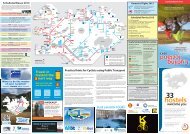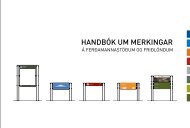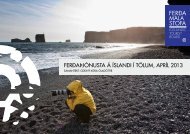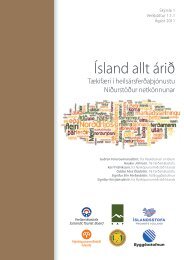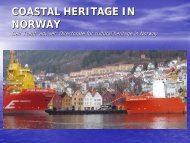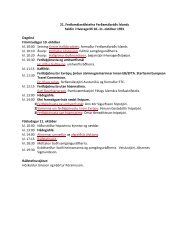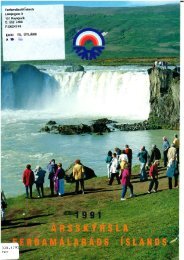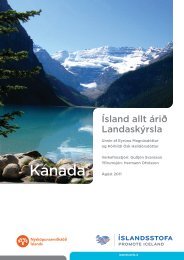Untitled
Untitled
Untitled
Create successful ePaper yourself
Turn your PDF publications into a flip-book with our unique Google optimized e-Paper software.
co-creator of tourist spaces” (Ek, Larsen, Hornskov, and Mansfeldt 2008,<br />
p. 124). The point to be made here is that there is no longer a single tourist<br />
customer onto which a clear cut destination image can be projected. The<br />
tourist now empirically and conceptually appears in the plural, but in<br />
addition they are not only tourists.<br />
Emerging from the narrow focused business and marketing research<br />
is also the other side of the visual paradox of tourism studies. It is readily<br />
apparent that a touristic site involves more than sightseeing and it seems<br />
very likely that “[t]tourists know that looks deceive” (MacCannell 2001, p.<br />
31). Yet, it may also be the case that emerging mobile technologies “are<br />
changing the nature of vision for both tourists and tourism researchers”<br />
(Feighey 2003, p. 82). As Jansson notes:<br />
The nature of visual representation is becoming more negotiable. Digital<br />
photography and video enable tourists to watch their recordings<br />
immediately and decide whether to keep them, or to delete and create<br />
new images (Jansson 2007, p. 13).<br />
Tourism images in digital code are now instantly made and easy to<br />
move, remove, edit, distribute and show in different environments and<br />
circumstances. A case in point indicating the lack of research engagement<br />
is the fact that “tourist videos have largely been ignored in tourism<br />
studies” (Feighey 2003, p. 81), and these are mostly very easily accessible.<br />
For example, on “You Tube” (one day in spring 2009) we found about<br />
33.400 video results when typing “Iceland”, 305 on “Images of Iceland”,<br />
25 on “Iceland and Tourism”. In other words, there is now a vast<br />
expanding pool of empirical visual evidence of tourism and tourists that at<br />
the same time is almost not being researched by tourism researchers. 36<br />
So it is that there is considerable potential for the use of new mobile<br />
technologies and social media within the context of leisure and tourism,<br />
yet little is known about how tourists actually incorporate these<br />
technologies into their tourism practices. Research on tourism and<br />
technology has tended to focus on the implications of information and<br />
communication technologies for the tourism industry, with less attention<br />
paid to the creative and often playful ways in which tourists use new<br />
mobile technologies and social media to organize their journeys, interact in<br />
tourist places, or share their experiences with friends and family. For<br />
example, how are gadgets like iPhones and GPS devices, social<br />
36 In a recent (2009) session call for the Annual conference of the Association of American Geographers<br />
this was recognised.<br />
88



